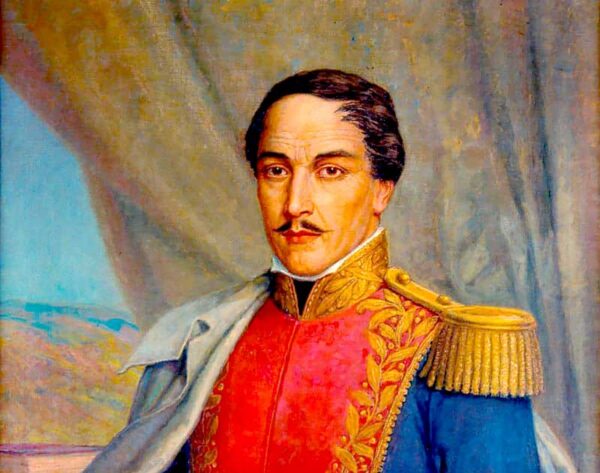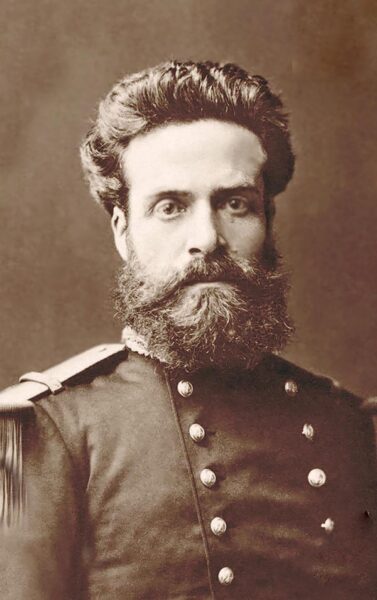Masonic Influence in the Independence feats
In this brief delivery, consistent with the context of the bicentennial celebration, we will address the interesting historical-temporal scenario of […]
In this brief delivery, consistent with the context of the bicentennial celebration, we will address the interesting historical-temporal scenario of the Masons in the process of the independence of the Isthmus. What happened in the region and in Panama in the years following independence from Spain, who promoted the independence movement, did the Masonic movement have an impact on the events of 1821, and beyond, in determining the construction of transoceanic communication?
About Freemasonry
It is defined as “an essentially philanthropic, philosophical and progressive institution. It educates man for freedom, a faculty or privilege that allows him to determine space and time in the lawful application of his thought. It does not accept any doctrine as definitive, but favors examination and research, and through study and reason admits all universal theses, under the postulates of liberty, equality and fraternity”. (Rosillo Torrente H. Revista La Tadeo No. 66 – Second Semester 2001 Bogotá, D.C. – Colombia).
Was the liberator Simón Bolívar a Mason?
In the lodge records of San Alejandro de Escocia (Paris, France), eight signatures stand out certifying that “Brother Simón Bolívar, initiate, is elevated to the degree of companion because of an upcoming trip that he is about to undertake”. The same source adds that “after the required formalities, Bolivar was proclaimed ‘Knight Companion Mason’, placing himself at the head of the noon column. We are before a Masonic document dated the 11th month of the year of the Great Light 5805, which is equivalent to January 1806 of the vulgar era, if we take into account that the Masonic calendar begins in the month of March”. (José Antonio Ferrer Benimeli, 2020). It is clear that Bolivar’s Masonic affiliation is not American but French, and there is no record of that activity in American lands.
The Jamaica Lodge
Panama, paraphrasing verses already sung, continues to be “door, bridge and port”. A place of transit, not only of merchandise, but also of ideas and new concepts. The Grand Lodge of England was the first lodge founded in Kingston (Jamaica), on April 14, 1739; the second in 1742 with the name of Port Royal Lodge. This is how the English colonies in the West Indies are the focus of new ideas and precepts of freedom, which are imported from England. The Provincial Grand Lodge of the Caribbean (1742), came to group 19 lodges by the year 1806.
Beginnings in Panama
It was the first lodge in the Isthmus. It is known by Alfredo Figueroa Navarro (Dominio y Sociedad en el Panamá Colombiano 1821-1903), that the Scottish Rite was imported to Panama from Jamaica. Panamanian merchants frequently traveled to that island to buy goods of European origin to be marketed in Panama. Through this commercial contact, the city of Panama was impregnated with new Masonic ideas, which – Figueroa Navarro continues – were not contradictory to the liberal precepts of those times. “The merchants of the Colombian coastal cities gained access to modernity through Jamaica and the non-Spanish Antilles”.

The Masonic movement in Panama was elitist and a way of social climbing in the society of Panama at the end of the 19th century. It had a secret character and even permeated the high spheres of political power in Bogota, where the same author (Figueroa Navarro) reveals that President Francisco de Paula and his entire cabinet adhered to the lodges, even with the participation of radical clergymen.
Masons and the Act of Independence
In the act of independence of 1821, Masons are among the recognized signatories. The signatures of Manuel María de Ayala, José Vallarino Jiménez and José Antonio Zerda can be verified. The independence movement was catalyzed by the activity of another mason of Serbian origin named Marco Radaniche. Later on, Juan Bautista Feraud, Carlos Plicet, Juan Miguel Labarrier… all merchants and influential people, joined the Masonic movement. José María Goytía (who introduced printing in Panama), Manuel José Dutari, Joaquín Morro and Bartolomé García de Paredes joined the list.
The engineer Colonel Francisco Burdett O’Connors is a member of La Mejor Unión, who is the organizer of the isthmus battalion for the battles of Junín and Ayacucho. The colonel responds directly to Bolivar and is a relevant actor in the Spanish-American independence struggles.
Masonic thought and the transoceanic route
Masonic thought radiated from the French and English European centers throughout the Antilles in the 18th and 19th centuries. The first explorations for the description of the Panama route have their genesis in the bosom of these European societies. The first explorations along the Isthmus route were contracted and promoted by Simón Bolívar in 1821, and developed by the English engineer John August Lloyd and the Swedish Admiral Mauricio Falmarc. It is important to mention that the first geographical society, the Paris Geographical Society, was organized in 1821. The Royal Geographical Society, its British counterpart, was founded in 1830, under the name of the Geographical Society of London. The territorial, geographic, naval and maritime communication was one of the main areas of scientific interest and research motifs of these geographical societies. Fifty years later, the Geographical Society of Paris promoted the construction of an inter-oceanic route through Panama, highlighting the explorations carried out by the French, led by Lucien N.B. Wyse and Armand Réclus.

All these geographical societies were the first to be organized in the world, a coinciding time of ideas of the Masonic movement in America. It is probable that Masonic thought and impulse had something to do with the decision to build the inter-oceanic route through Panama. Being all these social and political actors part of the temporal context of the late 19th century, we would dare to formulate our own hypothesis on the subject of the participation of Masonic thought in the determination of the transoceanic crossing and the route through Panama.
Do you have more questions? The topic, in short, is exciting, and deserves further research, to continue contributing to the discussion and knowledge of the rich history of the Isthmus of the nineteenth century, an imperative task for historians and those interested in these matters.